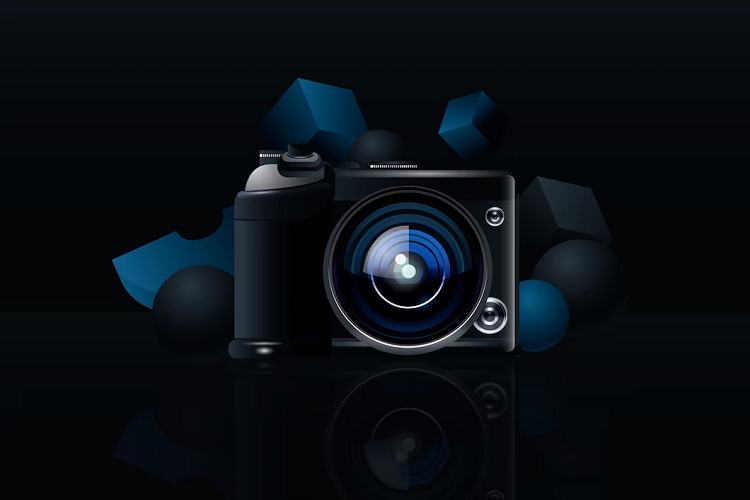Mirrorless cameras have revolutionized the world of photography, offering a compact and lightweight alternative to traditional DSLRs. These cutting-edge devices are equipped with advanced technology that delivers exceptional image quality and performance. In this article, we will delve into the world of mirrorless cameras and explore why they are the ultimate upgrade for DSLR users.

Advantages of mirrorless cameras over DSLRs
Mirrorless cameras offer several advantages over their DSLR counterparts. Firstly, their compact size and lightweight design make them highly portable, allowing photographers to carry them comfortably for extended periods. This makes them, such as the Canon EOS R10, ideal for travel, street photography, and other situations where mobility is key.
Secondly, mirrorless cameras boast electronic viewfinders (EVFs) that provide a real-time preview of the image, allowing photographers to see exactly how the shot will turn out. This eliminates the guesswork often associated with DSLRs, where the viewfinder shows an optical representation of the scene. Additionally, the EVF can display important shooting information, such as exposure settings and histograms, providing a more immersive shooting experience.
Another advantage is their silent shooting mode, which is particularly useful for capturing moments in quiet environments or during events where minimal disruption is desired. This feature is achieved by eliminating the mechanical mirror and shutter mechanism found in DSLRs, resulting in a practically noiseless operation.
Key features of mirrorless cameras
Mirrorless cameras come packed with a wide range of features that enhance the photographic experience. One notable feature is the ability to shoot in burst mode at incredibly high speeds. This allows photographers to capture fast-moving subjects with precision, making mirrorless cameras well-suited for sports and wildlife photography.
Moreover, it offer advanced autofocus systems that utilize sophisticated algorithms and face detection technology. These systems excel at tracking subjects, ensuring sharp and well-focused images. Some mirrorless cameras even boast eye-tracking autofocus, which can detect and track a subject’s eyes, resulting in stunning portraits with captivating eye detail.
Additionally, it often offer in-body image stabilisation (IBIS), which compensates for camera shake and allows for sharper images, even when shooting handheld in low-light conditions. IBIS is particularly useful when using lenses without built-in stabilisation, as it provides stability across a wide range of focal lengths.
Understanding lens compatibility with mirrorless cameras
One aspect that DSLR users transitioning to mirrorless need to consider is lens compatibility. While mirrorless cameras have their own lens mount systems, there are various adapters available that allow DSLR lenses to be used with mirrorless bodies. These adapters ensure that DSLR lenses can be fully utilized on mirrorless cameras, retaining autofocus capabilities and maintaining image quality.
However, it is important to note that using adapters may not always provide the same level of performance as native lenses. Native lenses are specifically designed for mirrorless cameras, taking full advantage of the camera’s features and delivering optimal image quality. Therefore, investing in native lenses is highly recommended for DSLR users looking to make the most of their mirrorless upgrade.
Transitioning from DSLR to mirrorless: Tips and considerations
Transitioning from DSLR to mirrorless requires a bit of adjustment, but with the right approach, it can be a smooth and rewarding experience. Here are some tips and considerations for DSLR users making the switch:
- Familiarize yourself with the new camera’s interface and controls: It often have different layouts and menu systems compared to DSLRs. Take the time to learn the new camera’s features and customize the settings to your preference.
- Experiment with the electronic viewfinder: Embrace the EVF and take advantage of its benefits. Use the real-time preview to fine-tune exposure and composition before taking the shot.
- Explore different lenses: Mirrorless systems offer a wide range of lenses to choose from. Experiment with various focal lengths and aperture settings to discover the creative possibilities that mirrorless cameras offer.
- Take advantage of the silent shooting mode: The silent shooting mode can be a game-changer, especially in situations where discretion is important. Practice using this feature to capture candid moments without disturbing the scene.
- Keep battery life in mind: It tend to have shorter battery life compared to DSLRs. Invest in spare batteries and consider carrying a portable charger to ensure you never miss a shot.
Conclusion: Making the switch to mirrorless cameras
In conclusion, mirrorless cameras offer a host of advantages over traditional DSLRs, making them the ultimate upgrade for photographers. From their compact size and lightweight design to their advanced features like electronic viewfinders and silent shooting, it provide an enhanced shooting experience. By understanding lens compatibility, considering the transition process, and adapting to the new camera’s features, DSLR users can seamlessly make the switch to mirrorless and unlock a world of creative possibilities.



